Latest Updates
-
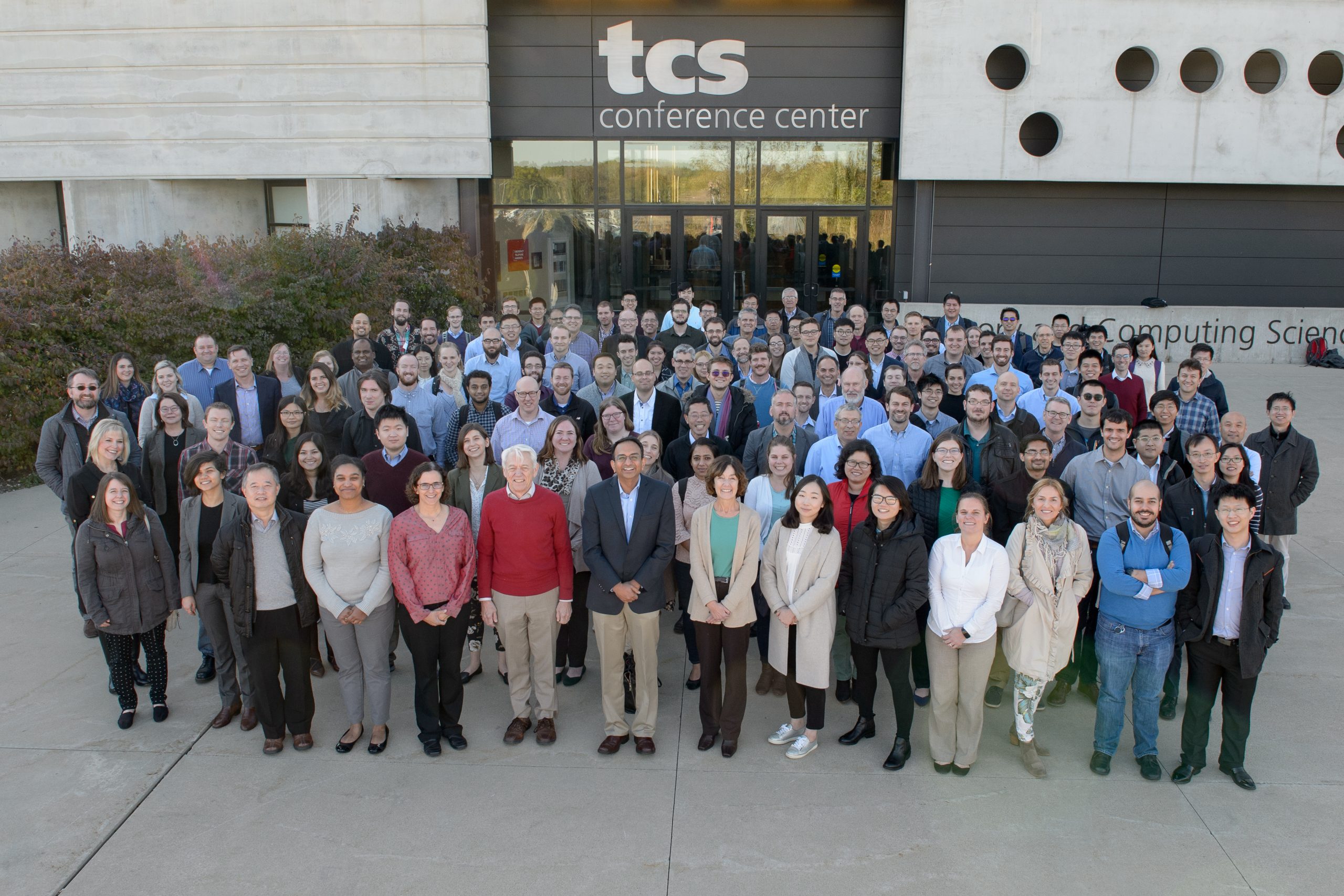
You’re Invited - JCESR and Beyond: Translating the Basic Science of Batteries
Please join us at Argonne National Laboratory on Tuesday, April 4, 2023 for JCESR and Beyond: Translating the Basic Science of Batteries. Registration is now open. This in-person event will celebrate 10 years of research from the Joint Center… Read More
-

A Message from JCESR: In Memory of George Crabtree
It is with heavy hearts that we say goodbye to George Crabtree, a Senior Scientist and Distinguished Fellow at Argonne National Laboratory, and Director of the Joint Center for Energy Storage Research (JCESR), who passed away unexpectedly on January 23. Dr. Read More
-
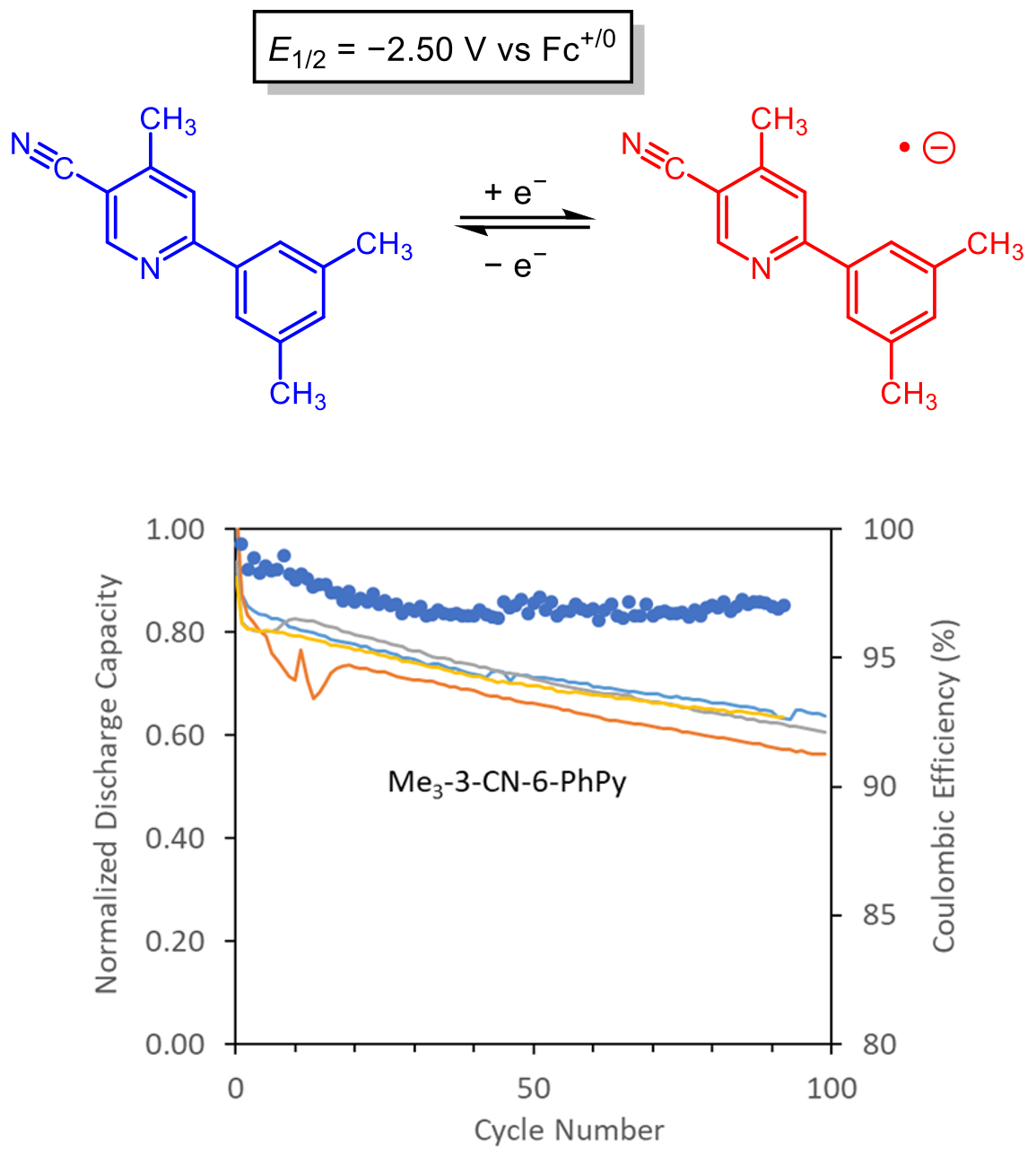
Cyanopyridines As Extremely Low-Reduction-Potential Anolytes for Nonaqueous Redox Flow Batteries
Discovery of a cyanophenylpyridine derivative with a very low reduction potential and good stability during cycling. Read More
-
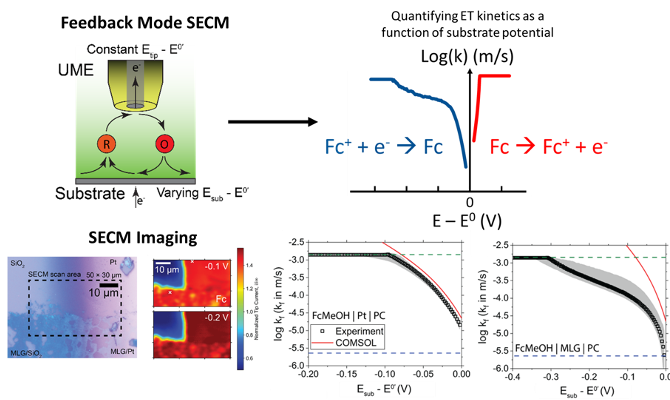
Characterizing Redoxmer – Electrode Kinetics Using a SECM-Based Spot Analysis Method
Identified asymmetries in electron transfer (ET) kinetics between the reduction and oxidation of ferrocene-based redoxmers by measuring the ET rate constants (kf/kb) as a function of electrode potential. Read More
-

Benzotriazoles as Low Potential Anolytes for Non-Aqueous Redox Flow Batteries
We developed an easy-to-synthesize benzotriazole-based anolyte with a high energy redox potential (-2.3 V vs Fc/Fc+) and high solubility that demonstrates stable electrochemical cycling performance. Read More
-

Hydrogen evolution mitigation in iron-chromium redox flow batteries via electrochemical purification of the electrolyte
An electrochemical purification method is used to mitigate the hydrogen evolution reaction (HER) in iron-chromium (Fe-Cr) redox flow batteries (RFBs), resulting in reduced capacity fade rates. Read More
-
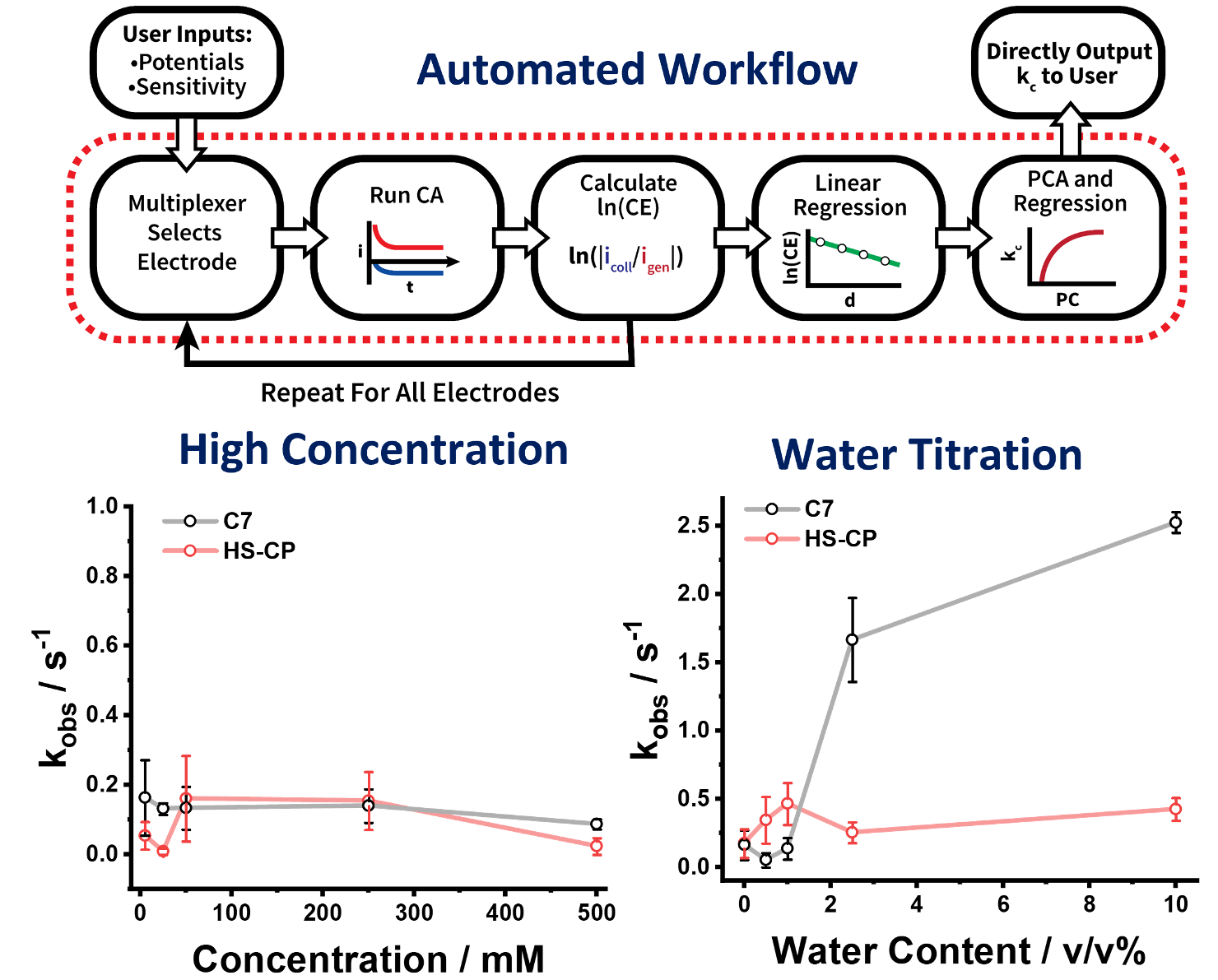
Automated Measurement of Electrogenerated Redox Species Degradation Using Multiplexed Interdigitated Electrode Arrays
Microfabricated devices enabled an automated methodology to quickly screen redoxmer degradation kinetics at concentrations up to 0.5 M. Read More
-
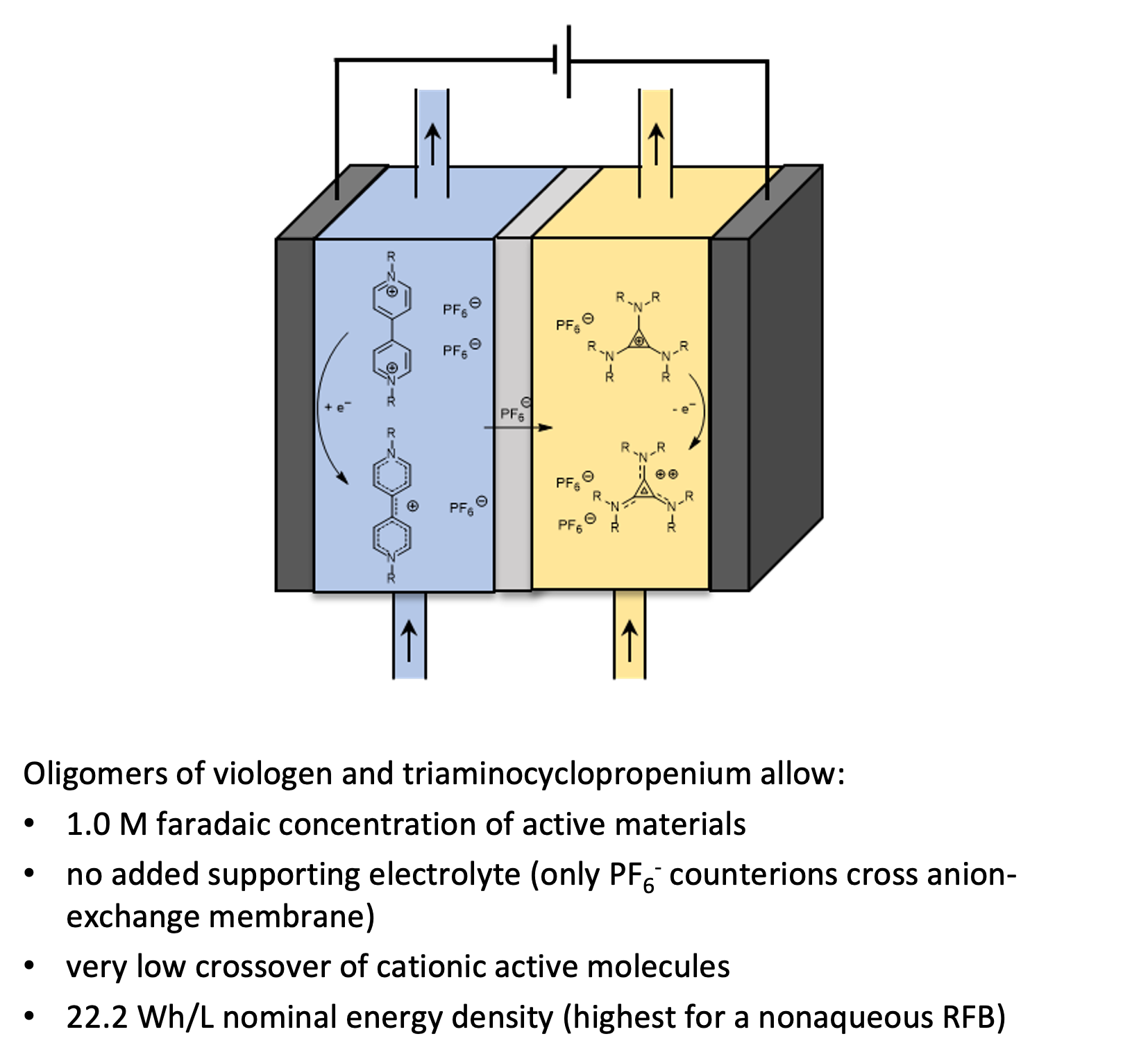
High Energy Density, Asymmetric, Nonaqueous Redox Flow Batteries Without A Supporting Electrolyte
Oligomers of permanently cationic anolyte and catholyte molecules allow the assembly of high energy density nonaqueous redox flow batteries with little crossover of active materials. Read More
-

JCESR Spotlight: Bob Jin Kwon, A Postdoc with Passion and Perseverance
Argonne recognizes Kwon’s contributions to battery science with the Postdoctoral Performance Award. Article authored by: Michael Matz, Argonne Associate Bob Jin Kwon likes a good challenge, particularly when it comes to developing completely new kinds of batteries. “Developing new battery technologies is very challenging,” said… Read More
-

JCESR Spotlight: Lily Robertson Recognized for Her Contributions to Battery Research
Argonne’s Postdoctoral Performance Award recognizes scientific achievements, leadership, and collaboration. Article authored by: Michael Matz, Argonne Associate Since her early days growing up in the Pacific Northwest, Lily Robertson has always wanted to help make the world a better place. “For as… Read More
-

Multi-chain cation coordination plays key role in increasing glass transition temperature in polymer systems
Free energy calculations show higher thermodynamic stability of multi-chain coordination compared to single-chain coordination in P(EO-MO) resulting in a higher increase in glass transition temperature with addition of salt as compared to PEO Read More
-
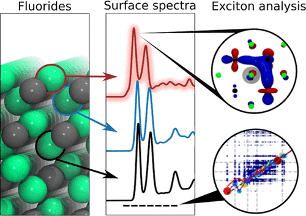
Excitonic Effects in X‐ray Absorption Spectraof Fluoride Salts and Their Surfaces
Advanced calculations of X-ray absorption spectra provide accurate reproduction of experiment, consistent energy alignment and comparative electronic structure interpretation for common fluoride salts often found at electrode interfaces. Read More
-
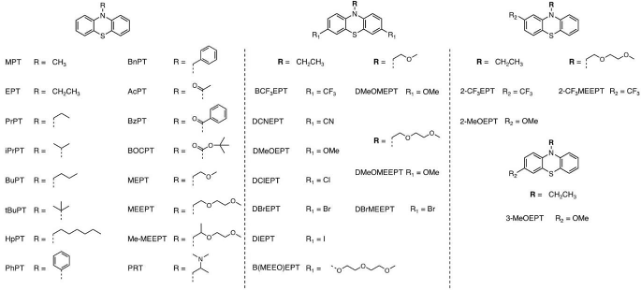
Large Variability and Complexity of Isothermal Solubility for a Series of Redox-Active Phenothiazines
Phenothiazine derivatives present a robust analysis system for experimental solubility determination in all states of charge. The QSPR models were only moderately successful in predicting solubility of an unknown PT compound. Modeling solubility of a fairly complex molecular set with only a few descriptors is difficult. Read More
-
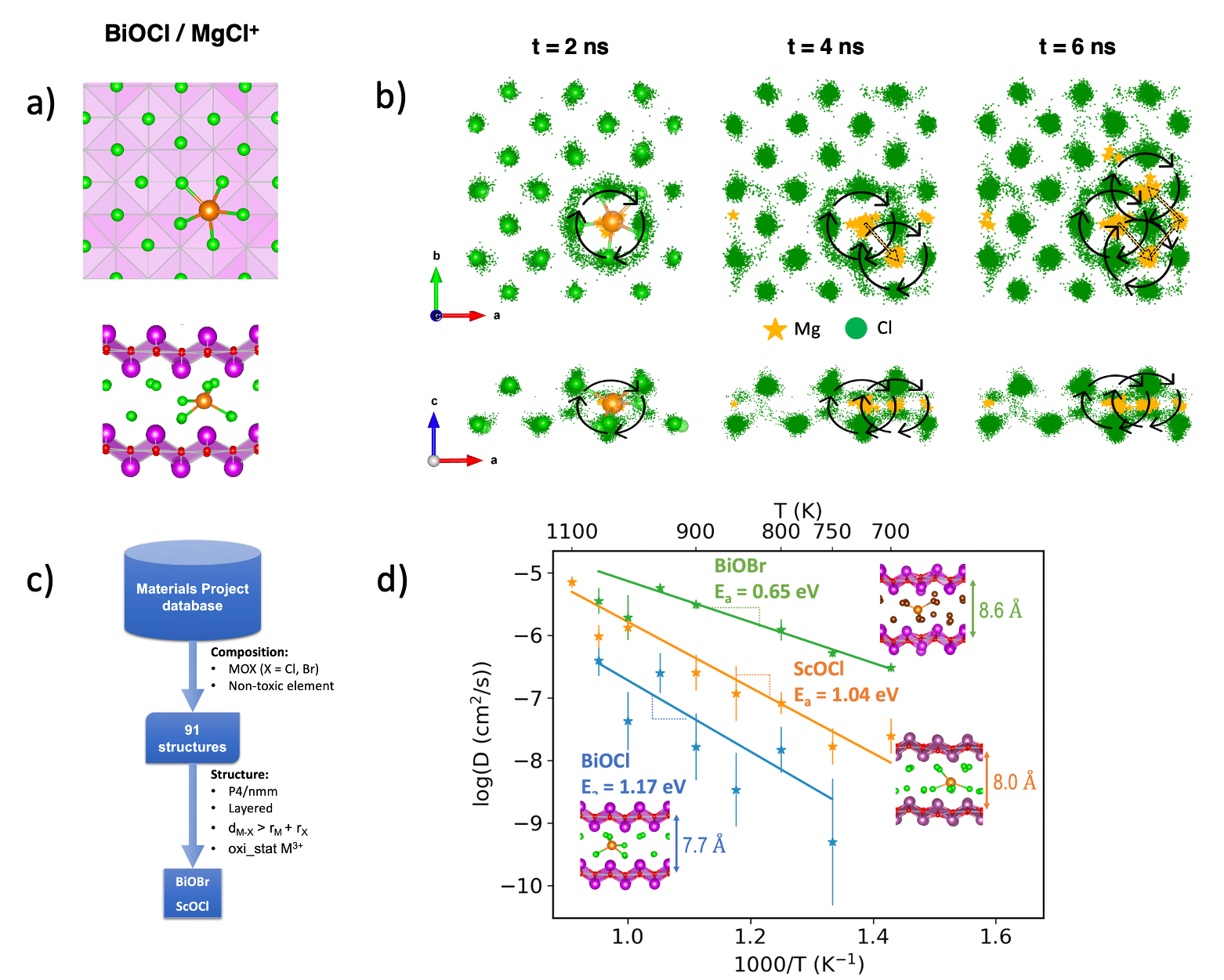
Ionic Dynamics of the Charge Carrier for Mg Batteries
Enabled by the high accuracy and computing efficiency of machine learned interatomic potential trained on-the-fly, we performed dynamic simulation of multivalent ion diffusion in solid materials at nanosecond time scale. Our computations revealed diffusion mechanisms, where cation hopping coordinated by surrounding anions’ synchronous movements in the oxyhalide-based, novel magnesium anode coating materials. Read More
-
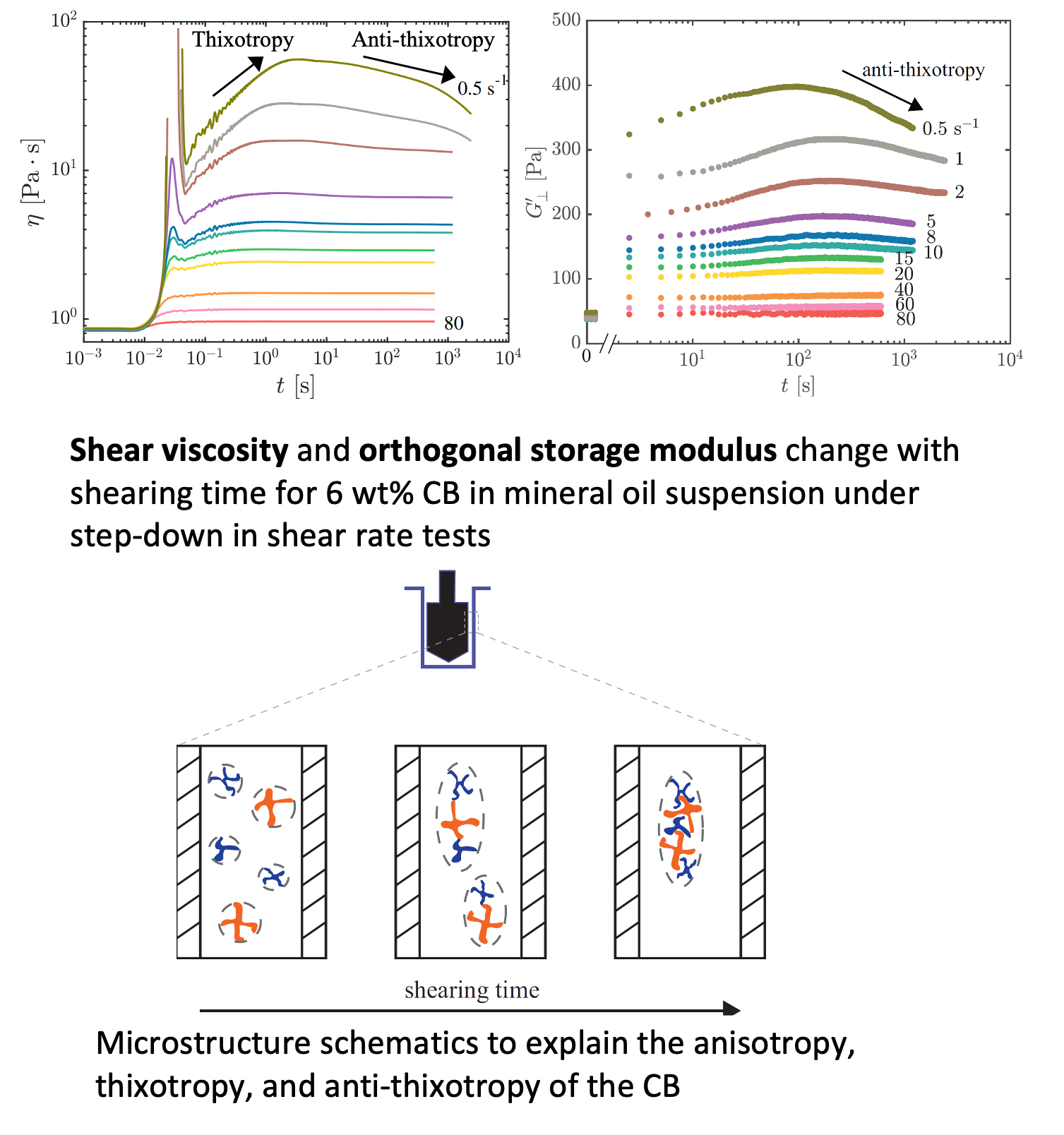
Rheology of suspension of carbon black (CB) – a conductive additive in flow batteries
Carbon black (CB), a conductive additive used in flow batteries, is proved to show thixotropy (less flowable with time under step-down in shear rate) and anti-thixotropy (more flowable with time), and this is rationalized with a qualitative mechanical model. Read More
-
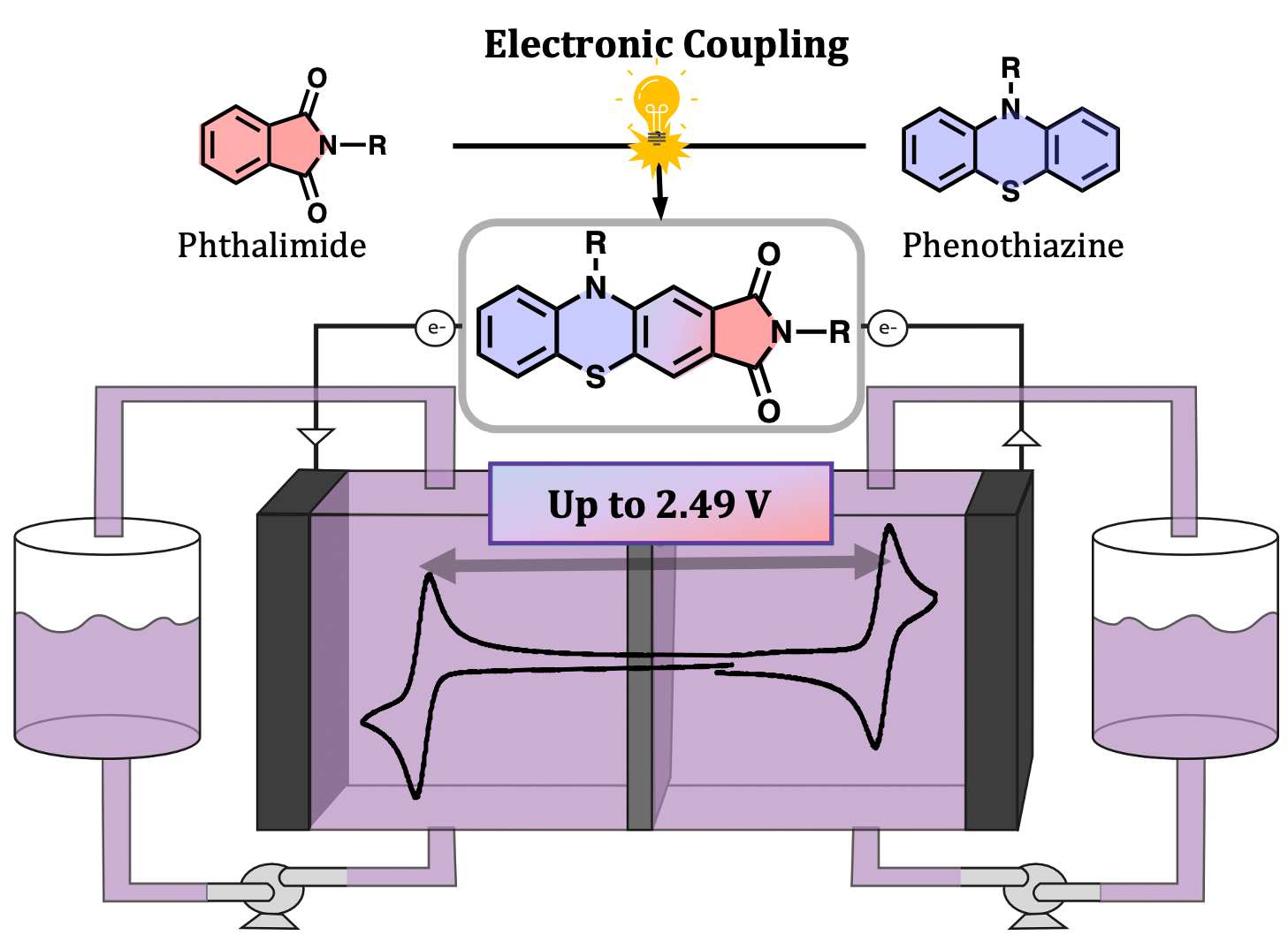
Improving Flow Battery Voltages by Electronically Coupling Anolyte and Catholyte Structures
Phenothiazine catholytes and phthalimide anolytes have been electronically coupled to create a new class of bipolar redox-active molecules (i.e. molecules that can be both reversibly oxidized and reduced) with enhanced voltages as compared to what can be achieved by their uncoupled building blocks. Read More
-

A Heterogeneous Oxide Enables Reversible Calcium Electrodeposition for a Calcium Battery
The solid electrolyte interphase (SEI) formed on the calcium anode during reversible calcium electrodeposition has been compositionally mapped revealing the role of a heterogenous, nanometric calcium oxide as the responsible cation conductor and protective interphase. Read More
-
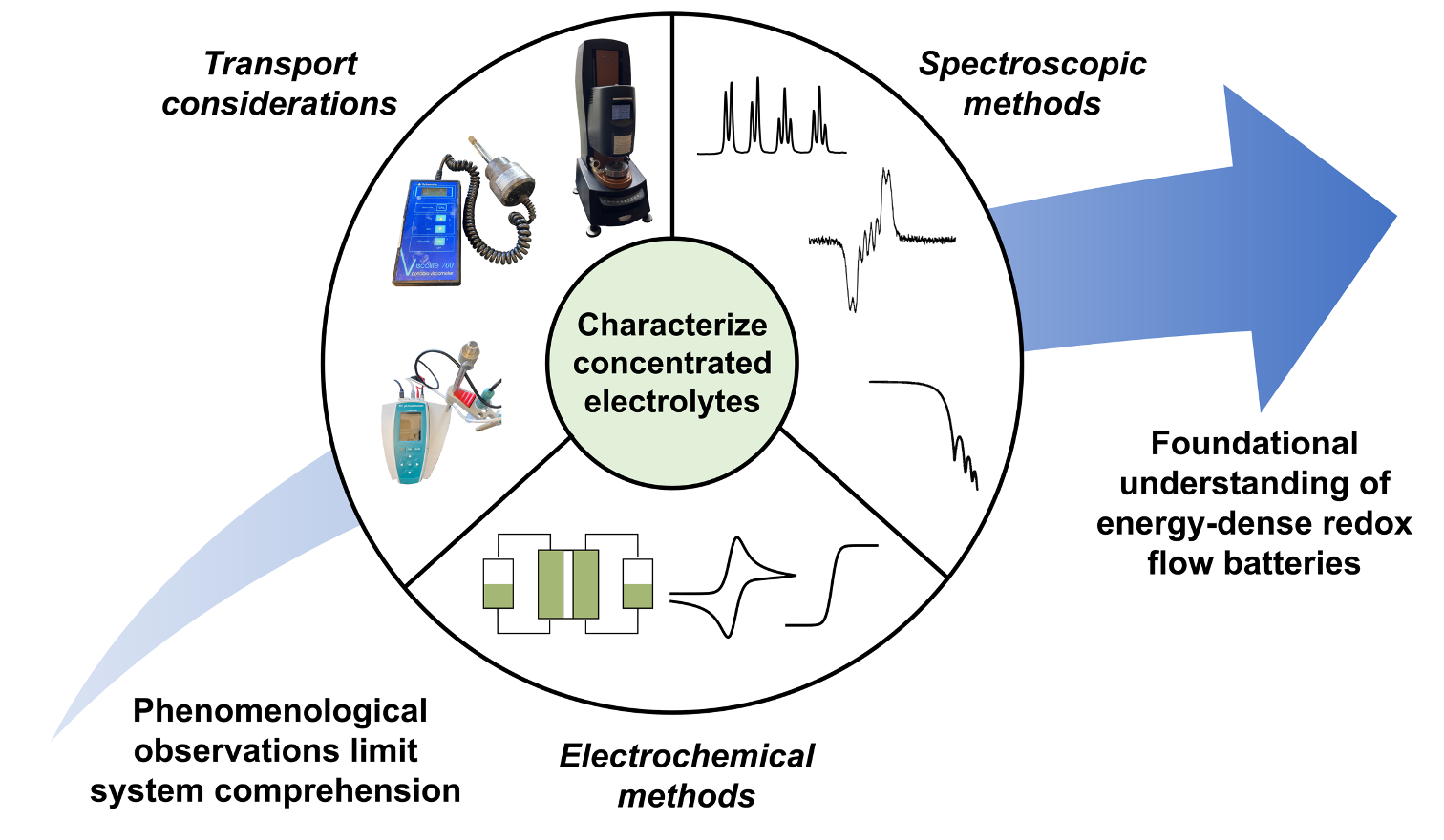
On the challenges of materials and electrochemical characterization of concentrated electrolytes for redox flow batteries
This perspective highlights the status of, and propose future approaches for, rheological, electrochemical, and spectroscopic characterization of electrolytes with high concentrations of redox-active analytes for energy storage, with an emphasis on nonaqueous redox flow batteries (RFBs). Read More
-

From Networked to Isolated: Disrupting Water Hydrogen Bonds in Superconcentrated Electrolytes
Using ultrafast infrared spectroscopy and molecular dynamics simulations we uncover details of the molecular-scale structure of super-concentrated aqueous electrolytes. Read More
-
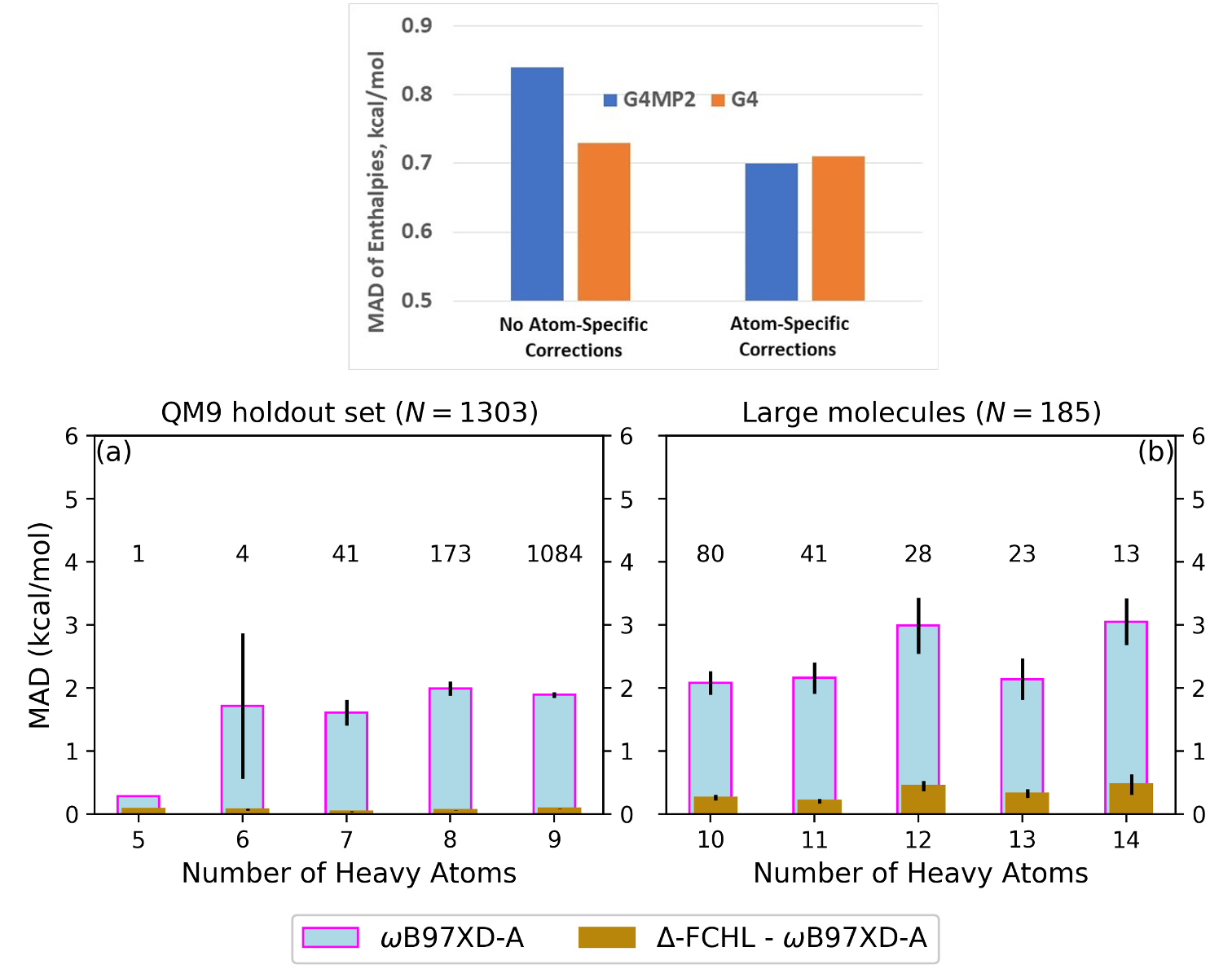
IMPROVING ACCURACY OF COMPOSITE METHODS: A G4MP2 METHOD WITH G4-LIKE ACCURACY AND IMPLICATIONS FOR MACHINE LEARNING
This work introduces a new method to improve quantum chemical predictions of energies of large organic molecules that can also be used in combination with machine learning to predict molecular energies at a much lower cost of computer time. Read More

